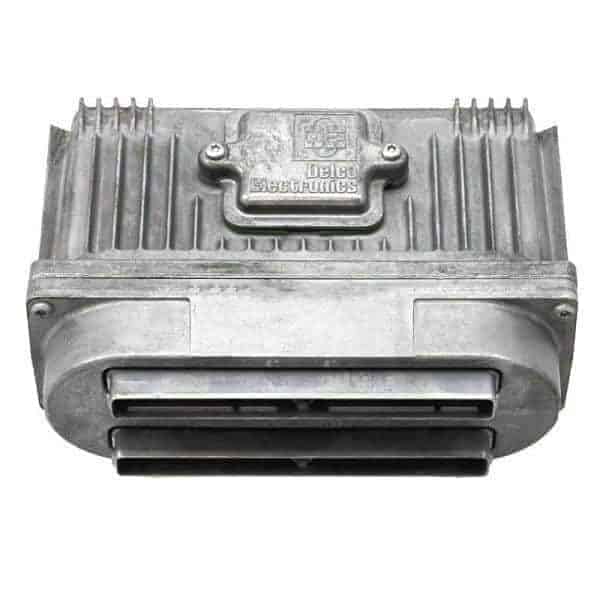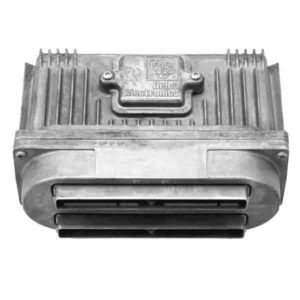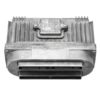Is Your 1997 GM Vehicle Running Rough? The ECM Might Be the Culprit.
If you’re dealing with a frustrating no-start condition, erratic engine behavior, harsh shifting, or a persistent Check Engine Light on your 1997 Pontiac Bonneville or other compatible GM model, the Powertrain Control Module (ECM) is often the root cause. Over time, the internal components of these modules can fail from heat cycles and vibration, leading to symptoms that can be maddening to diagnose. I’ve seen it hundreds of times in my shop: mechanics and owners chase their tails replacing perfectly good sensors, when the vehicle’s computer brain was the problem all along.
The Direct Solution: A VIN-Programmed Replacement ECM
This isn’t just a replacement part; it’s a complete, ready-to-install solution. We take the guesswork and extra cost out of the repair. When you order, you provide us with your vehicle’s VIN. We then flash this ECM with the latest official GM software calibration specific to your car. This ensures it communicates perfectly with your engine, transmission, and all other onboard systems right out of the box.
- ✔ VIN Programmed for Your Vehicle: We load the correct software using your VIN, ensuring 100% compatibility.
- ✔ No Expensive Dealer Trip: This module is plug-and-play. No additional programming or security relearn procedures are typically required.
- ✔ Solves Common Failure Points: Directly addresses issues like random stalling, poor fuel economy, no-start, and false sensor codes.
- ✔ Direct Fit for Part Numbers: This unit is a guaranteed replacement for part numbers 16218070 and 16217058.
Real-World Diagnostic Story
“A customer’s 1997 LeSabre came in last week with these exact symptoms—it would crank but not start, and when it did run, it shifted hard between first and second gear. The owner had already replaced the crank sensor and a fuel injector based on a generic code reader. After confirming power and ground at the ECM connector, we suspected the module itself. We installed one of our pre-programmed units, and the car fired up instantly and shifted like new. The issue wasn’t the sensors; it was the ECM’s internal driver circuits failing, a common issue on these 3.8L platforms.”
Easy Installation Guide for Your 1997 Bonneville ECM
Replacing the ECM is a straightforward job you can do in your own driveway with basic hand tools. Follow these steps for a smooth installation:
- Safety First: Disconnect the negative terminal from your car’s battery and secure it away from the post to prevent any accidental reconnection.
- Locate the ECM: On most of these vehicles, the ECM is located inside the air filter box housing. You will need to open the airbox to access it.
- Disconnect the Connectors: Carefully unclip the wiring harness connectors from the old ECM. Inspect the terminals for any corrosion or damage. If you see any green or white powder, clean it carefully with a terminal brush before proceeding.
- Remove the Old Module: Unbolt or unclip the old ECM from its mounting bracket within the airbox.
- Install the New ECM: Mount your new, pre-programmed ECM in place and securely reconnect the wiring harnesses. You should hear a distinct ‘click’ as they lock in.
- Reconnect Battery: Reattach the negative battery terminal. The vehicle is now ready to start.
Guaranteed Vehicle Compatibility
This Electronic Control Module is a direct-fit replacement for a wide range of popular 1997 General Motors vehicles. Please verify your model and engine option below to ensure a perfect match.
- Bonneville: 1997 (3.8L, w/o supercharger)
- LeSabre: 1997 (3.8L)
- Regal: 1997 (3.8L, w/o supercharger)
- Eighty Eight: 1997 (3.8L, w/o supercharger)
- Grand Prix: 1997 (3.8L, w/o supercharger OR 3.1L)
- Lumina Car: 1997 (3.1L)
- Monte Carlo: 1997 (3.1L)
- Century: 1997 (3.1L)
- Skylark: 1997 (3.1L)
- Grand Am: 1997 (3.1L)
- Achieva: 1997 (3.1L)
- Cutlass: 1997 (Supreme models)
- Venture: 1997 (3.4L)
- Trans Sport: 1997 (3.4L)
- Silhouette: 1997 (3.4L)



